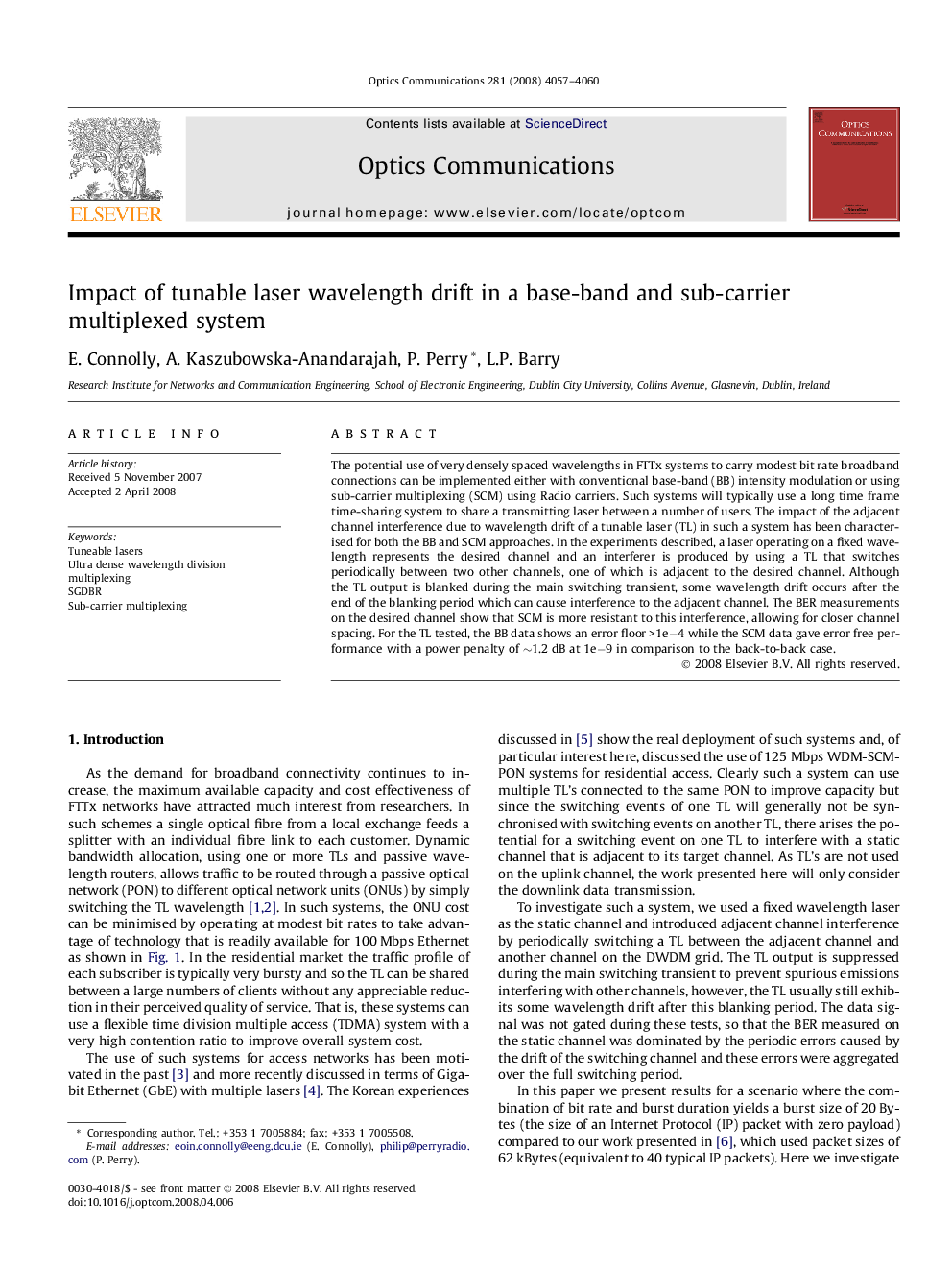| Article ID | Journal | Published Year | Pages | File Type |
|---|---|---|---|---|
| 1540162 | Optics Communications | 2008 | 4 Pages |
Abstract
The potential use of very densely spaced wavelengths in FTTx systems to carry modest bit rate broadband connections can be implemented either with conventional base-band (BB) intensity modulation or using sub-carrier multiplexing (SCM) using Radio carriers. Such systems will typically use a long time frame time-sharing system to share a transmitting laser between a number of users. The impact of the adjacent channel interference due to wavelength drift of a tunable laser (TL) in such a system has been characterised for both the BB and SCM approaches. In the experiments described, a laser operating on a fixed wavelength represents the desired channel and an interferer is produced by using a TL that switches periodically between two other channels, one of which is adjacent to the desired channel. Although the TL output is blanked during the main switching transient, some wavelength drift occurs after the end of the blanking period which can cause interference to the adjacent channel. The BER measurements on the desired channel show that SCM is more resistant to this interference, allowing for closer channel spacing. For the TL tested, the BB data shows an error floor >1eâ4 while the SCM data gave error free performance with a power penalty of â¼1.2Â dB at 1eâ9 in comparison to the back-to-back case.
Keywords
Related Topics
Physical Sciences and Engineering
Materials Science
Electronic, Optical and Magnetic Materials
Authors
E. Connolly, A. Kaszubowska-Anandarajah, P. Perry, L.P. Barry,
